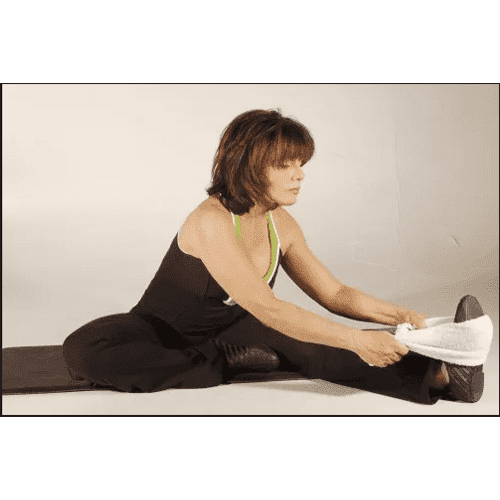Let there be no debate
A friend was telling me the other day about, shall we say, a difference in opinion he’d held—for years—with his wife about the proper time to stretch. The hubby believed that it was always best to stretch before exercise, not after. His wife believed that the only stretching needed was after a workout.
So, whose side to take?
I got off easy over this argument. Turns out, they were both wrong.
First of all, unless you’re nursing an injury, there’s really never a bad time to stretch. When you stretch regularly—while working out or not—you become more flexible. And flexibility may just be the single most effective deterrent to the effects of aging. You don’t lose flexibility with aging; you lose flexibility when you don’t stretch. Or exercise. Circulation, posture, range of motion—stretching and flexibility can go a long way to improving a number of everyday ills that come with aging. When you stretch and become more flexible, you increase the distance your limbs can travel before an injury might occur. That’s a good thing whether you’re working out, crossing the street on wet, slippery pavement, or simply tying your shoes.
Stretching before a workout
Cold muscles limit range of motion and are more receptive to injury. Always include a warm up period (at least five minutes) before a workout that includes some stretching. Start with a gentle stretching of your head and neck and then work your way down your body; go for a short walk, or even take a warm bath. The point is, loosen and warm up so that both your body and mind are more receptive to the workout ahead.
During a workout
This is a workout ritual that many people don’t consider, but is just as important as any other time. Working with resistance, as we do on Body Electric TV, not only makes your muscles stronger but also temporarily shorter (contracted) and therefore, more susceptible to injury. So it is critical to stretch your muscles back to their resting length after each exercise. During a workout, I generally do 15 to 30 seconds of stretching following each exercise for a particular muscle group before moving on to the next exercise.
After a workout

The cool-down period is a great time—while you’re still warm—to work on muscle length and flexibility. Just as you should stretch between each exercise, your cool-down period should also include stretching that brings muscles back to their resting length. Stretching at the end of a workout has the added pleasure of alleviating post-workout muscle soreness, and it also works to increase blood circulation and remove waste products such as lactic acid. Bonus benefit: it’s a reward for a job well done.
Stretching between workouts
To keep your muscles supple between workouts, stretch every three days for five to ten minutes. Anytime you’re feeling tight, perform a few minutes of gentle stretching. All stretching, no matter when or where, should be static. That is, never bounce your way through a stretch.
I hope that settles that debate.
Learn more about stretching and flexibility in chapter four of my book, Body Electric (McGraw Hill, 2008).


